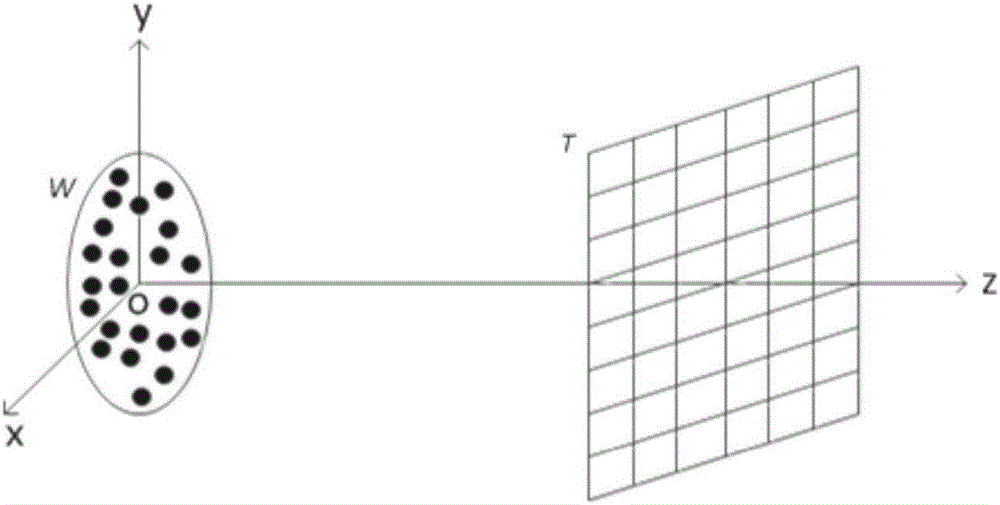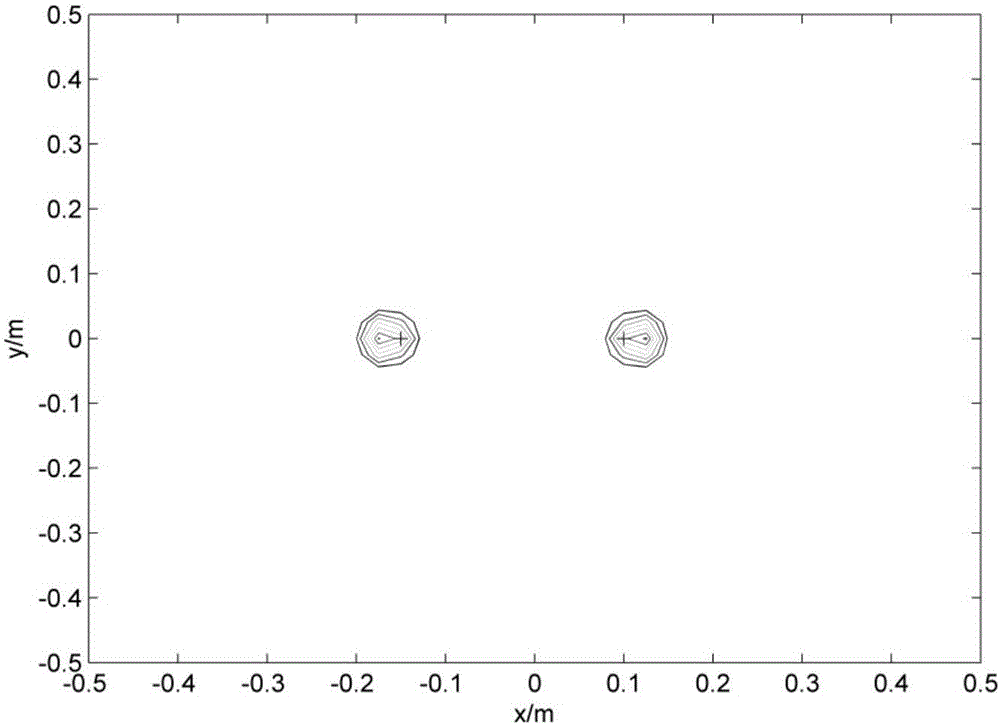High-resolution rapid deconvolution sound source imaging algorithm
A high-resolution, deconvolution technology, applied in the direction of measurement devices, instruments, radio wave measurement systems, etc., can solve the problems of increased computing scale, computing efficiency, and insufficient resolution
- Summary
- Abstract
- Description
- Claims
- Application Information
AI Technical Summary
Problems solved by technology
Method used
Image
Examples
Embodiment Construction
[0048] The high-resolution fast deconvolution sound source imaging algorithm of the present invention is to carry out as follows:
[0049] Step a, such as figure 1 As shown, in the sound field formed by the radiation of K sound sources, M sensors are arranged in an array to form a measurement surface W, and the sound pressure data of each sensor is collected. The number K of sound sources is less than the number M of sensors, and the sensors are microphones or particle Vibration sensor.
[0050] Step b. Discretize the sound source calculation plane into a grid plane, the grid plane is the focal plane T, and the focal plane T contains N grid points, and each grid point is a focal point, calculated by formula (1) The cross-spectral imaging beamforming output b(r n ):
[0051]
[0052] In formula (1), is the guiding vector, i is the imaginary number unit, k is the sound wave number, k=2πf / c, π is the circumference ratio, f is the sound source frequency, c is the sound v...
PUM
 Login to View More
Login to View More Abstract
Description
Claims
Application Information
 Login to View More
Login to View More - R&D
- Intellectual Property
- Life Sciences
- Materials
- Tech Scout
- Unparalleled Data Quality
- Higher Quality Content
- 60% Fewer Hallucinations
Browse by: Latest US Patents, China's latest patents, Technical Efficacy Thesaurus, Application Domain, Technology Topic, Popular Technical Reports.
© 2025 PatSnap. All rights reserved.Legal|Privacy policy|Modern Slavery Act Transparency Statement|Sitemap|About US| Contact US: help@patsnap.com



